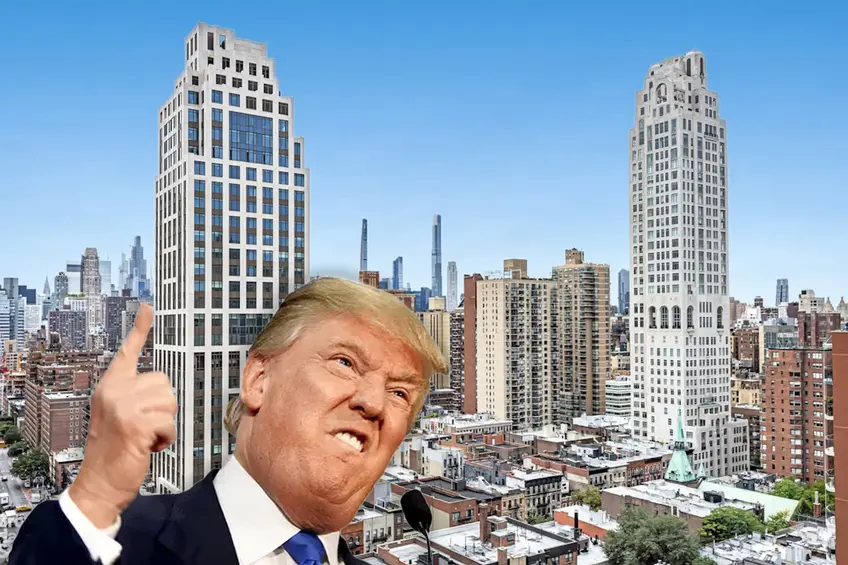
President Trump’s tariffs are poised to leave few unscathed, particularly in the housing sector. On Wednesday, Trump imposed what he referred to as “dollar for dollar reciprocal tariffs” on 90 countries he believes to be trade threats, this includes a 25% additional tariff on imports from Canada and Mexico, and a 10% additional tariff on imports from China, now totally, possibly, up to 54%.
Many countries are quickly retaliating, namely China which is imposing tariffs of up to 15% on a broad range of U.S. agricultural exports. Additionally, it increased the number of U.S. companies facing export controls and other restrictions by approximately two dozen. Canadian Prime Minister Mark Carney announced that his country would match Trump's 25% auto tariffs with a tariff on vehicles imported from the United States.
And murmurings suggest China, Japan, and South Korea may join together with a group retaliation.
So, what does this mean for New York City housing?
The cost of lumber—Canada being the United States’ largest supplier—is expected to rise, along with materials such as drywall (mostly from Mexico), home appliances and metals (a majority come from China), and labor, the latter due to the administration’s immigration crackdown. Rob Dietz, chief economist at the National Association of Home Builders, estimates that the new tariffs could drive up construction costs by $7,500 to $10,000 per home.
For New York City, where 69 percent of residents are renters, the stakes are especially high. Already, average rents in Manhattan have surged beyond $5,000 as supply dwindles. One question remains: How will these tariffs affect the city’s housing market and when will it begin to feel the impact?
Manhattan Borough President Mark Levine has been pushing for solutions to the city’s affordability crisis. He has advocated for policies to increase the supply of both affordable and market-rate housing, identifying opportunities for tens of thousands of new units, and fought to protect existing tenants from displacement.
On Wednesday, Levine took to X, formerly Twitter, to sound the alarm.
“I don't think people realize how much Trump’s economic policies are already hurting NYC,” he said. “So many builders I talk to are pausing or canceling projects because they have no idea how much lumber or steel will cost, or whether we're going to be in a recession in six months. There are people in NYC who will not have housing because of this. There are people who will not have jobs because of this. Trump owns this. This is his economic legacy.”
Asked whether now is a good time to invest in New York real estate, Levine remained optimistic in the long term but acknowledged short-term turbulence.
“I believe in NYC in the long term. I would not bet against us,” he said. “We survived COVID, the 2008 financial crisis, Superstorm Sandy, and 9/11. I believe in the future of New York, but we will be enduring pain in the short term—pain that was totally unnecessary and entirely manufactured by the president’s policies. It didn’t have to be this way.”
Some see potential benefits for a segment of the real estate market if the housing pipeline slows and stock market volatility persists. In an article published today by The Real Deal on the impact of tariffs, Stephens analyst John Campbell says we may see a “long-term upside” in the residential market, predicting it will become a “safe haven” for investors.
Corey Cohen, Founder of The Roebling Group, commented, “Regardless of market fluctuations and policy changes, people will always need a place to live, and New York City remains one of the most desirable places to own a home. Unlike stocks that can be more reactive to economic shifts, real estate is a tangible, hard asset that provides stability—much like how we’re seeing investors retreat to gold. While tariffs may increase future construction costs, existing market-rate housing supply is far less subject to the whims of policymakers.”
As for when New Yorkers will start to feel the impacts, Levine said they will take time to materialize.
“To be honest, I don’t know when,” he said. “Construction cycles take years to play out. A project set to open next week will still open next week. But any developer putting a project on pause now? That will be felt in a couple of years.”

Contributing Writer
Michelle Sinclair Colman
Michelle writes children's books and also writes articles about architecture, design and real estate. Those two passions came together in Michelle's first children's book, "Urban Babies Wear Black." Michelle has a Master's degree in Sociology from the University of Minnesota and a Master's degree in the Cities Program from the London School of Economics.

 6sqft delivers the latest on real estate, architecture, and design, straight from New York City.
6sqft delivers the latest on real estate, architecture, and design, straight from New York City.
